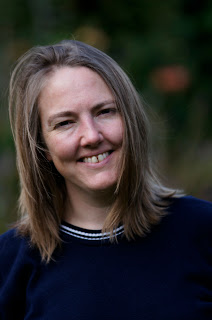Aim: The aim of this exercise is to learn how to deal with the unique problems created when photographing highly reflective surfaces such as stainless steel or chrome.
Approach and results:
For this exercise I hunted round the house for a suitable stainless steel object. I found it in a Georg Jensen tea light holder. Georg Jensen is a Danish designer whose designs are usually very clean lined stainless steel. The tealight holder had a smooth round surface that reflected the camera no matter where you put it; perfect. I then turned my attention to the home made funnel 'light tent'. I did not have any tracing paper but I do have a sheet of white translucent polyproplene which fitted the bill. I used a white card background deliberately as refering to 'Light Science and Magic' a dark base would have taken the light away from the front of the tealight holder. As it turned out I couldn't get the funnel to bend enough to see the front of the tealight anyway; not without letting light and other reflections in.
The following two shots are without the light tent. The first shot was without flash and, as you can see the reflection in the surface shows not only me but the whole room. There are also a series of shadows and reflections caused by the window light. For the second shot I used direct flash mounted on the camera with a small softbox on it. This gives a bright spot for the flash and darkens the rest of the image, not really giving a true rendition of the tealight. There are some fine surface marks near the bright spots and a dark shadow at the front.
 |
| No flash |
 |
| Flash mounted on camera |
The following four shots are taken with the light tent and the flash in different positions. The immediate and quite dramatic improvements are obvious. Firstly there is nothing reflected in the surface, giving the tealight smooth clean visible lines. The shape is more easily recognised. Secondly the diffuse, angled lighting shows the stainless steel finish without darkening it due to under exposure created by a direct flash reflection. That said, not all the shots are good. The first shot has created two large bright spots around the rim of the tealight. Moving to the right has removed these spots and produced a better result. Moving to the left has produced another bright spot on the rim because of the angle of the tealight. Shooting from the top has produced a more evenly lit shot but it also produces a slight, but more obvious shadow. This is not necessarily a bad thing as I think it shows off the depth of the tealight more.
 |
| Front right |
 |
| Right |
 |
| Left |
 |
| Top |
Learning points:
When photographing shiny objects it is important to remove as much of the surrounding reflection as possible as reflections detract from the shape of the object by breaking up lines.
Diffuse lighting produces a much more accurate and even exposure, showing the surface in its true light. This also covers imperfections in the surface.
In general the lighting needs to be taylored to the object so that there are no direct reflections from the light source causing hot spots.











































